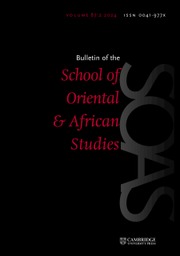No CrossRef data available.
Article contents
A Curious Case of Idiomatic Sanskrit
Published online by Cambridge University Press: 24 December 2009
Extract
In the Introduction to his translation of the Vaikh1nasasmārtasūtra (p. xiii fll.) Professor Caland has called attention to certain Tamilisms in the said work, such as anyāṃ vivāhaṃ kuryāt (═ vēru peṇṇai vivākam ceytu-kolla-vēṇum), vedān … adhyayanaṃ Jcaroti, etc. In a work like the Vaikhānasa-sūtra, which is obviously not written in the best Sanskrit, this is not very surprising, nor can it be said that these irregularities render the text unintelligible anywhere. But there seem to be, even in the works of well-known Sanskrit authors, cases of Sanskrit influenced by the vernacular which actually embarrass the reader. One such case is the following one which I came across recently in Śankarānanda's Bhagavadgītā-vyākhyā.
Information
- Type
- List of Contributions
- Information
- Copyright
- Copyright © School of Oriental and African Studies 1931
References
page 481 note 1 His followers do explain and quote it.
page 481 note 2 Brahma-Purāṇa (cxv, 103 fll.) declares the tortures of Mahā-tāmisra to last “ as long as the earth exists ”, and similarly some other Purāṇas speak of some particularly terrible hell.

